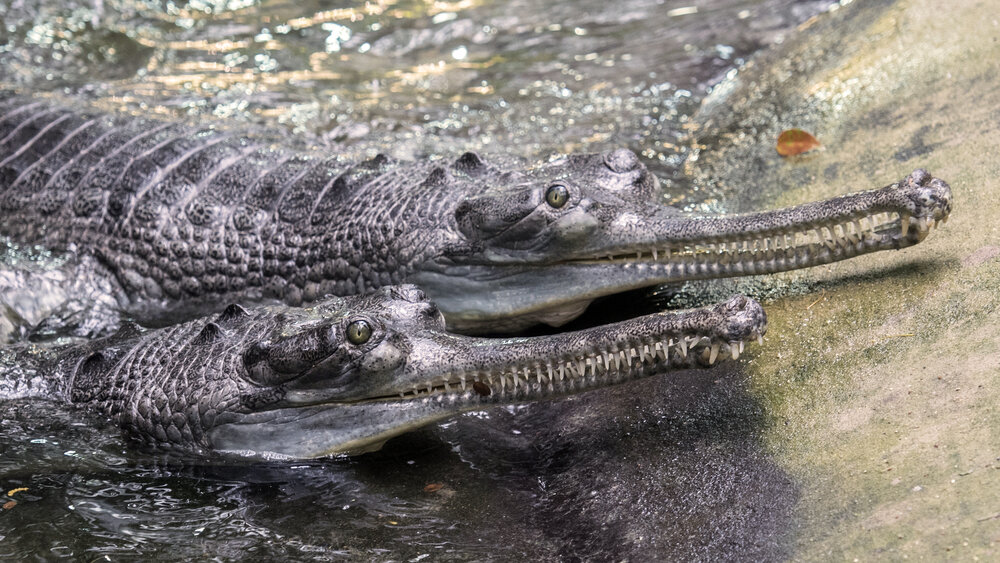
Gharial
Zoo Berlin is helping to protect gharials in India.
Project facts
- Project name
Gharial Ecology Project
- Species
Gharial (Gavialis gangeticus)
- IUCN threatened status
Critically Endangered (CR)
- Project location
National Chambal Sanctuary, India
- Greatest threat
Destruction of habitat
- Response
Setting up breeding and reintroduction programmes
Threat Categories of IUCN


Slender-snouted crocs
Gharials are one of the rarest crocodilians in the world. Since 2013, Aquarium Berlin has been home to a reserve population of gharials that are part of the breeding group of Dvůr Králové Zoo in the Czech Republic. The species’ native home is in Nepal and northern India, where they inhabit the river Ganges and its tributaries. Gharials favour deep, fast-flowing rivers with broad sandbanks, where the loose ground is ideal for the females to dig holes for their eggs.
The last two percent
Gharials were once found in almost all large rivers of northern India, as well as those in neighbouring countries Pakistan, Nepal, Bangladesh, Bhutan and Myanmar. But increasing pollution of their habitat – which also depletes the fish they feed on – poses an enormous threat to their survival. Today, these primeval reptiles have disappeared from 98 percent of their former habitat range. There are only around 1,500 gharials currently left in the world.
On a slippery slope to extinction?
Several years ago, the number of gharials fell so drastically that, in 2007, the IUCN upgraded the species’ threatened status to “Critically Endangered”. Shortly afterwards, a mass dying-out began, the causes of which remain uncertain to this day. That caused another drastic decline in the population, with small pockets surviving only in India and Nepal. As a result, the two countries developed a joint action plan to save the gharial from extinction.
Lending a helping hand
Today, the only reasonably stable population lives in the National Chambal Sanctuary (NCS) in India, where the three states of Madhya Pradesh, Rajasthan and Uttar Pradesh meet. Current conservation plans are focused on coordinated breeding and the subsequent reintroduction of young gharials into the wild to boost existing populations. This involves taking eggs from nests in the wild so as to hatch and rear the gharials in human care. Once they reach more than one metre in length, they are released into the protected area.
More information equals greater success
In order to assess the survival chances of these reintroduced animals and to further improve existing strategies, conservationists need more information. Up to now they have had little or no data to tell them what happens to the animals once they have been released into the wild. At what age and what size do the animals have the best chances of survival after release? Where should they be released? Where do the animals tend to go once they have been released? Finding answers to these questions is crucial for ensuring the long-term success of the conservation project. Zoo and Aquarium Berlin are therefore supporting an initiative to attach transmitters to young gharials shortly before they are released into the wild.
Photos: © Gharial Ecology Project


